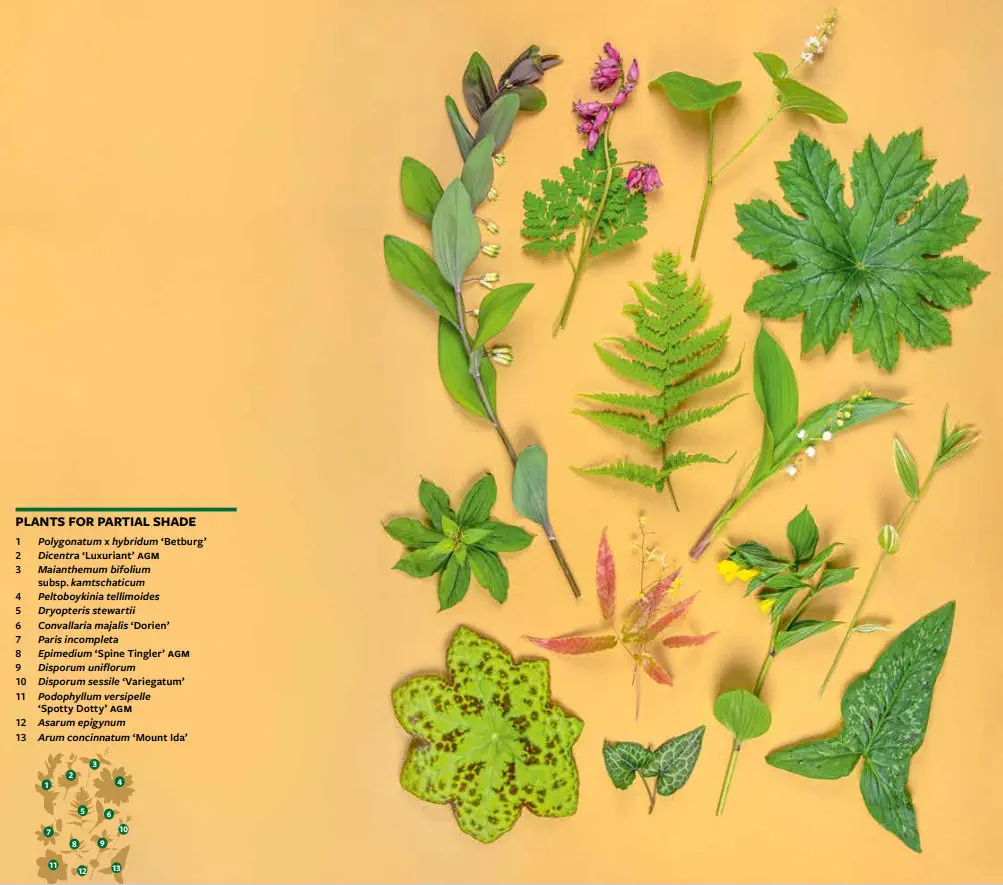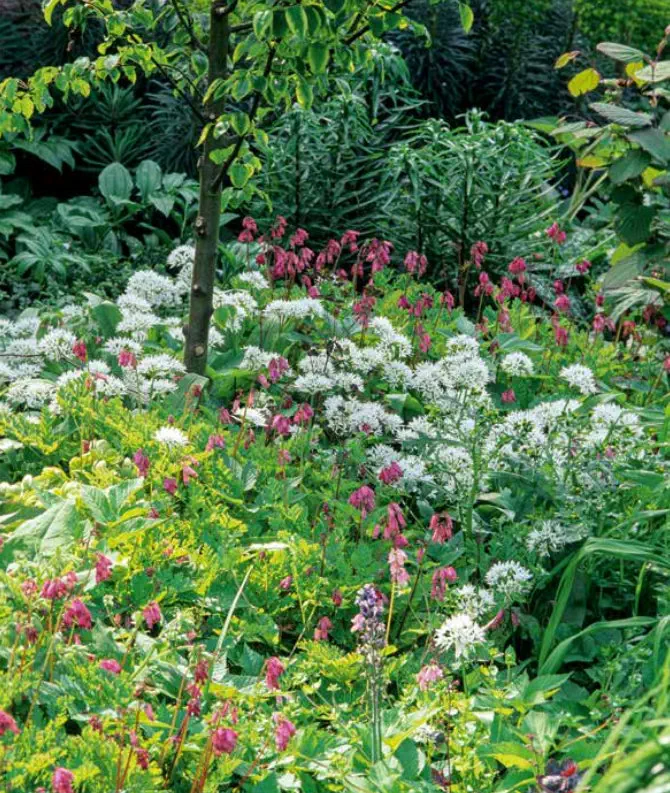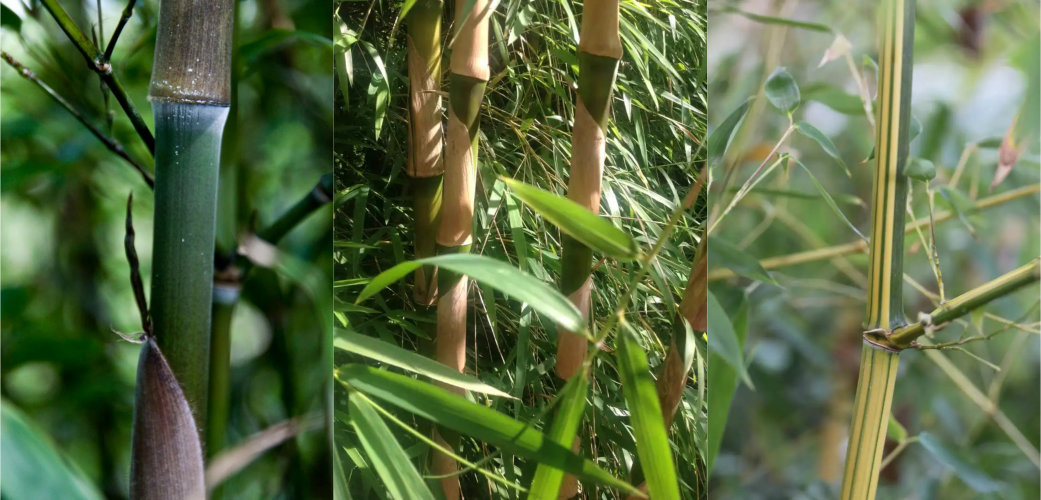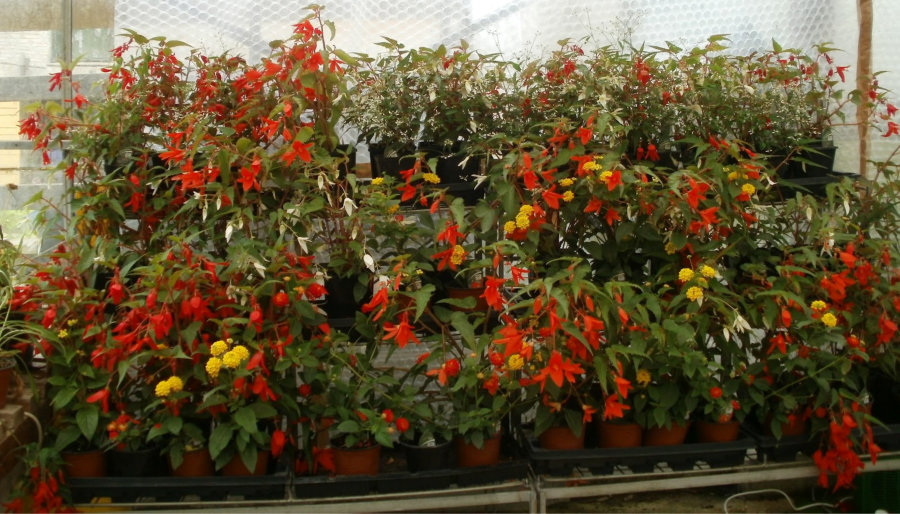With spring on its way, it is time to identify shady spots below trees and shrubs that could be transformed with exciting plants adapted to similar conditions in woodland habitats
Gardens evolve, just as the interests of people with a passion for plants and nature do; one thing I have found in gardening is that you never stop learning. My own garden in Lincolnshire was once an open site with a traditional lawn and narrow borders. Hostile, freezing winds are a problem in this area, so sheltering bamboos were among the first plantings I made, which allowed me to grow the trees and shrubs I could not live without.
 But before long these plants also provided a shaded, sheltered microclimate with ideal conditions for many woodland perennials to grow. These diverse hardy plants from temperate forests around the world are united only by their adaptations to shady conditions.
But before long these plants also provided a shaded, sheltered microclimate with ideal conditions for many woodland perennials to grow. These diverse hardy plants from temperate forests around the world are united only by their adaptations to shady conditions.
They soon fascinated me, and now provide ever-changing tapestry greens and foliage textures. In this garden the different levels of planting with trees, followed lower down by shrubs and finally perennials, mimic those of a true woodland.
In truth you do not need a woodland garden: most woodlanders thrive in shaded borders, or even in pots perhaps by a north-facing fence, but it is important to identify the kind of shade you have before choosing what to plant. The perennials I describe here will grow in deciduous shade, be it dappled or partial and below evergreens, so long as conditions are not too dry.
Keeping up traditions
I have always been keen on Polygonatum (Solomon’s seal). A tradition learned from my mother was to pass on a piece of P. odoratum to people moving to a new home as a good-fortune plant; a clump of this plant still thrives in our garden as a memory of her. I am sure this started my obsession with these plants and their relatives.
 Polygonatum x hybridum ‘Betburg’ is a most desirable plant; it emerges from the ground in early spring with its wonderful sultry dark purplish foliage on arching stems to 80cm (31in) tall, followed by clusters of dangling creamy flowers with green tips at the leaf axils (where the leaf joins the stem). Foliage turns green later in the year and the flowers produce attractive dark fruits. It is rather slow growing but easy enough for dappled shade in good, well-drained soil that does not get too dry, and hardy to H7 (colder than −20°C/−4°F).
Polygonatum x hybridum ‘Betburg’ is a most desirable plant; it emerges from the ground in early spring with its wonderful sultry dark purplish foliage on arching stems to 80cm (31in) tall, followed by clusters of dangling creamy flowers with green tips at the leaf axils (where the leaf joins the stem). Foliage turns green later in the year and the flowers produce attractive dark fruits. It is rather slow growing but easy enough for dappled shade in good, well-drained soil that does not get too dry, and hardy to H7 (colder than −20°C/−4°F).
On the other hand, close-relative Maianthemum bifolium is just as hardy, bulks up quite well and will make a nice spreading ground cover of green, heart-shaped glossy leaves with a spike of fluffy fragrant cream flowers poking through the foliage at the junction of the petiole and leaf. We grow several selections of this but a firm favourite is M. bifolium subsp. kamtschaticum which has larger leaves. In autumn the foliage turns a lovely yellow before dying back for winter.
I’m also really keen on the many different Disporum; in fact, at the nursery, one side of a polytunnel is taken up with my stock plants. Most are similar to Polygonatum, with arching stems and alternating leaves up their length, but they tend to produce their flowers from the terminal end of the stem. These are usually cream, bell-shaped clusters, but in the case of Disporum uniflorum they are large and yellow. This has stems that grow to 50cm (20in) high and is one of the jewels of spring. As the name suggests, Disporum sessile ‘Variegatum’ has green leaves striped with creamy white variegation on stems to about 30cm (12in); its flowers are quite large and cream with a tinge of green and green tips. An advantage of Disporum over Polygonatum is that they do not tend to fall victims to Solomon’s seal sawfly that can ruin a clump of Polygonatum. Most seem hardy to at least H6 (−20 to −15°C/−4 to 5°F).
Also closely related are Convallaria. It may have a reputation for a being bit thuggish but C. majalis (lily of the valley) is a plant I could not do without for its fairy-bell flowers of cream and wonderful scent. These in turn make colourful fruit and often good autumn colour. Hardy to H7, there are many selections available but I find ‘Dorien’ produces larger flowers with stronger scent.
More essential woodlanders
So many ferns are useful in woodland planting schemes but one I am especially fond of is Dryopteris stewartii . An upright, mainly deciduous fern, it has handsome, triangular to lance-shaped fronds of mid-green which reach about 50cm (20in) tall. It is nice and showy, especially in spring with its yellow-green young fronds; these darken gradually with maturity. Once established it stands fairly dry shade and is hardy to around H5 (−15 to −10°C/5 to 14°F).
If, like me, you appreciate green flowers, Paris (related to Trillium but not as demanding) are essential in a woodland garden. British native P. quadrifolia is a lift to the heart if you can get a glimpse of it growing in the wild, but it will also grow well in the garden. Probably a bit showier is P. incompleta which produces stems to about 30cm (12in), its whorls of leaves below that impressive starry green flower. Both are hardy to around H5.
 So useful and easy in shade for their low-growing habit, super foliage (which is often marbled when young) and sprays of dainty flowers, Epimedium have undergone a big surge in the number and quality of selections available in the last few years. One especially popular is E. ‘Spine Tingler’ AGM (syn. ‘Sphinx Twinkler‘) which has lovely long, holly-like leaves topped by tall sprays of sulphur- yellow flowers in April, to about 45cm (18in) tall. Also excellent is E. ‘Amber Queen’ AGM, which is taller to around 60cm (24in) with long-lasting, spidery, soft orange flowers. Both, and many others, are hardy to H6 (−20 to −15°C/−4 to 5°F).
So useful and easy in shade for their low-growing habit, super foliage (which is often marbled when young) and sprays of dainty flowers, Epimedium have undergone a big surge in the number and quality of selections available in the last few years. One especially popular is E. ‘Spine Tingler’ AGM (syn. ‘Sphinx Twinkler‘) which has lovely long, holly-like leaves topped by tall sprays of sulphur- yellow flowers in April, to about 45cm (18in) tall. Also excellent is E. ‘Amber Queen’ AGM, which is taller to around 60cm (24in) with long-lasting, spidery, soft orange flowers. Both, and many others, are hardy to H6 (−20 to −15°C/−4 to 5°F).
Of similar stature and also easily grown, Dicentra is a genus that has had many former members reclassified as Lamprocapnos but, happily, superb Dicentra ‘Luxuriant’ AGM along with other lower-growing species and selections is unchanged. It spreads by rhizomes just below the soil surface, with blue-green ferny foliage topped by delicate sprays of deep pink flowers rather like ladies in waiting. If grown in a spot it likes, it flowers into midsummer and forms a clump 60cm (24in) or more across. Hardy to H5.
Lower-growing still – almost at ground level – many Asarum are worth considering. These curious plants often have boldly marked appealing foliage and slightly sinister looking flowers. I enjoy A. epigynum (hardy to H5) with arrow-shaped, silver-veined Pink-flowered Dicentra ‘Luxuriant’ (left) is a useful, easily grown plant ideal for light shade below trees, spreading by rhizomes to form excellent deciduous leaves and spider-like flowers held beneath the foliage in late spring. Also with good foliage and similar hardiness is Arum concinnatum ‘Mount Ida’ , a plant with two seasons of interest. In spring its striking, mottled, arrow-shaped leaves on petioles to 50cm (20in) shine then, later, green-spathed flowers with a rose interior appear. For autumn, spikes of red berries make a vibrant show after the foliage has withered. This is another woodlander that once established is tolerant of drier shade, good at the base of trees.
From a fantasy woodland
You would never believe Podophyllum versipelle ‘Spotty Dotty’ AGM is closely related to Epimedium: it looks to have come straight out of a fantasy garden with its mottled, parasol-like foliage (30cm/12in across) on a single stem up to 50cm (20in), often with large, cerise flowers that hang deliciously below. Hardy to H4 (−10 to −5°C/14 to 23°F), it is early to emerge, so be prepared to cover with fleece if a late frost threatens. If parasol-like foliage appeals, Peltoboykinia tellimoides is also a good in a woodland scheme, and is similarly hardy. Its leaves, 30cm (12in) across, have deeply cut edges and attractive veining, held on branching stems to 60cm (24in), topped by sprays of cream flowers in late spring to midsummer.
These are not perennials that will thrive in the driest shade; in such situations I would turn to plants such as Hedera (ivy) or better-behaved Symphytum (comfrey), especially selections with a high degree of variegation. But in the cool, reasonably moist shade found in many places in the garden these woodlanders bring the excitement and beauty of spring right up to your door.







